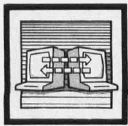Telecomputing Today

Arlan R. Levitan
In Pursuit Of Lower Phone Bills
For months I'd been bugging a friend about his reluctance to add a modem to his home computer. Then, while visiting a computer store one day, I was busy inspecting a surge protector designed to protect the surge protector I already own when something caught my eye. It was a modem that would work with John's Commodore 128, complete with software for only $39.95. I walked over to him and waved the modem package slowly back and forth before his eyes for maximum hypnotic effect.
"That sure is a good price for a modem," John admitted. "But wouldn't I end up paying at least that much every month in phone bills and information service charges?"
He had me there. I recalled my own introduction to telecomputing and the trauma induced by various bills totaling over a hundred dollars for an uncontrolled spree of telecomputing.
Node-To-Node Networking
Sound like a familiar complaint? Now there's a solution. How would you like unlimited access to hundreds of computer bulletin boards all over the country for a flat fee of $25 a month?
If you live in the metropolitan areas of Atlanta, Boston, Chicago, Dallas, Denver, Detroit, Houston, Los Angeles, New York, Philadelphia, San Francisco, or Washington D.C., such a service is available. It's called PC Pursuit, and it's marketed by GTE Telenet, one of the giants of the packet-switching business.
What's packet switching? It's a system used daily by hundreds of businesses that have centralized computer systems linked to branch offices in different cities. Rather than leasing expensive data lines to link each branch office to the central computer, they call a local node or connection point that hooks into a special long-distance network. The call is routed through the packet-switching network to another node that is local to the firm's central computer.
The vast bulk of data traffic on packet-switching networks occurs during the business day. Although the networks are also used by people accessing commercial information services during off-hours, there's still a lot of extra capacity. PC Pursuit is an attempt by GTE Telenet to make productive use of those idle resources. Here's how it works:
Registered users call a special access number via their modem and computer. When the connection is established, the PC Pursuit system asks for their phone number, the city they wish to call, and the phone number they're trying to reach. Next, the system disconnects, temporarily freeing the phone line. Within 20 seconds, the system calls back. The user re-establishes the modem link, and then the system rings the number of the BBS. If a computer answers, PC Pursuit reports that the connection is complete. It's as if the user had directly called the remote computer himself. While the process may sound somewhat complicated, it actually requires only three pieces of information from the caller, and takes only about a minute.
A Few Limitations
For the most part, PC Pursuit works well. I spent my first evening calling BBSs in Los Angeles, Houston, and Dallas that I had been limiting my use of to keep my long distance bill from resembling the national debt. The quality of the connections is quite good, and the few noisy lines I've encountered can probably be blamed on a poor local connection at either end of the telecomputing link.
The cost savings can be significant, especially if you're a heavy user. I figured that the cost of making all of my PC Pursuit calls for the first month alone would have been well over $200. Prospective users must consider whether the onetime $25 registration and monthly $25 usage fees will actually save money.
PC Pursuit does have its limitations. You can use the service only from a single, registered phone number, typically the home number your computer is connected to. The service is offered only during Telenet's off-hours, from 6 p.m. to 7 a.m. Monday through Friday, and on weekends from 6 p.m. Friday to 7 a.m. Monday. Each PC Pursuit connection can last only 60 minutes at a time (you can, however, make multiple calls to the same number).
Since it takes longer to make a call and is a somewhat more complicated process, it is more difficult to use the redialing routines within terminal programs to bust the busy signals of the most popular bulletin boards. And although PC Pursuit tells you if the requested number is busy, the actual call cannot be monitored via a speaker on direct-connect modems. That makes it impossible to hear recorded messages informing you that a line has been disconnected or its number changed.
Also, packet switching reduces the speed of the telecomputing link. I clocked my average PC Pursuit connection at just a little less than 1000 bps (bits per second), even though I was using a 1200 bps modem. Things slow down even more when transferring files with protocols such as XMODEM—I clocked the speed at 720–950 bps.
If you're interested in more information, call GTE's bulletin board at 1-800-835-3001. Or, if you prefer to talk to a human, call 1-800-368-4215.